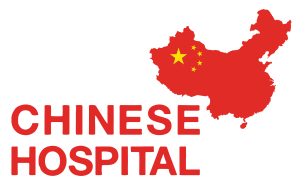Introduction: Tackling the Refractory Frontier in LBCL
Relapsed or refractory large B-cell lymphoma (R/R LBCL) continues to pose significant clinical challenges, especially after failure of frontline chemoimmunotherapy. In China, the incidence of non-Hodgkin lymphoma, including aggressive subtypes like LBCL, is on the rise due to an aging population and environmental factors.
In recent years, CAR T-cell therapy—particularly CD19-targeted constructs like relma-cel (developed in China)—has demonstrated impressive remission rates. Meanwhile, high-dose therapy (HDT) followed by autologous stem cell transplantation (ASCT) has long served as a salvage modality. Combining both approaches, under a carefully planned treatment timeline, is now seen as a rational strategy by many leading hematology departments in China.
The Scientific Rationale Behind the Combination Strategy
1. CAR T-Cell Immunotherapy
CAR T-cells are autologous T lymphocytes engineered to express synthetic receptors that bind specific tumor antigens, most commonly CD19.
China's NMPA (National Medical Products Administration) has approved several CAR T products including axicabtagene ciloleucel (Yescarta) and locally developed CARs like relma-cel.
Clinical trials in China, such as those at Ruijin Hospital and Peking University Cancer Hospital, show durable remissions with single-agent CAR T, but relapse remains a concern.
2. High-Dose Therapy and ASCT
HDT with BEAM or CBV regimens is still standard for second-line consolidation.
Stem cells, usually harvested prior to CAR T or following leukapheresis, are reinfused post-HDT to rescue bone marrow function.
In Chinese settings, ASCT is often done under strict infection control, especially with concurrent CAR T-related lymphopenia.
3. Sequential or Concurrent Administration: Timing Matters
In some Chinese centers, CAR T-cell infusion is scheduled before ASCT, taking advantage of immune reconstitution for better T-cell expansion.
Others administer HDT/ASCT first, then use CAR T as a consolidation therapy to eradicate minimal residual disease (MRD).
Both approaches aim to maximize cytoreduction and prevent immune escape.
Real-World Evidence and Clinical Outcomes in China
Clinical Results
Multi-center retrospective analyses in China show that patients receiving combination therapy (CAR T + HDT/ASCT) had a:
CR rate of >70%
Median PFS over 12–18 months, significantly higher than monotherapy.
Some hospitals, like Shanghai Pulmonary Hospital, report that combining therapies significantly reduced relapse in patients with double-hit lymphoma (DHL) and CNS involvement.
Functional Improvements in CAR T-Cells
Patients who underwent HDT prior to CAR T-cell infusion demonstrated enhanced T-cell persistence and cytokine secretion profiles (e.g., IFN-γ, IL-2).
The immune-depleted tumor microenvironment post-HDT allows CAR T-cells to function with less Treg interference and MDSC suppression.
Safety Profile and Management
CRS and ICANS (immune effector cell-associated neurotoxicity syndrome) remain common but are more predictable and milder with appropriate tocilizumab/steroid use.
Chinese centers often pre-screen patients using PET-CT, cytokine panels, and T-cell receptor repertoire profiling to assess fitness for combination treatment.
Advantages of the Combination Therapy: A Chinese Perspective
Maximal Cytoreduction: HDT clears bulky disease, allowing CAR T-cells to engage minimal residual disease effectively.
Dual Immunologic Reset: HDT reboots the immune system; CAR T provides targeted immunity.
Lower Tumor Burden, Lower Toxicity: Sequential strategy reduces risk of tumor lysis and CRS severity.
Better Accessibility: China’s centralized production facilities and lower CAR T costs improve patient access to such complex therapies.
Challenges and Limitations
Cost and Reimbursement: Despite government support, combination therapy remains financially challenging for rural or uninsured patients.
Heterogeneity in CAR Constructs: Locally developed CAR T-cells vary in efficacy; standardization is a priority.
Lack of Long-Term Follow-Up: Chinese real-world registries (e.g., CSCO Lymphoma Platform) still need robust 5-year outcome data.
Biomarker Gaps: There's a growing need for predictive markers of response and toxicity in Asian populations.
Conclusion: A Roadmap Toward Personalized Dual-Modality Therapy
From the viewpoint of a Chinese hematologist-oncologist, the integration of CAR T-cell therapy with HDT/ASCT is not just a theoretical possibility—it is becoming a mainstream option in high-volume tertiary centers.
With China's increasing clinical experience, large patient population, and investments in cell therapy manufacturing, this combination is positioned to become a new standard of care for patients with high-risk, relapsed, or refractory LBCL.
Future directions include:
Use of next-generation CARs (e.g., dual-targeted CD19/CD22 constructs)
Application of single-cell RNA sequencing to personalize timing
Integration with checkpoint inhibitors or bispecific antibodies post-transplant




